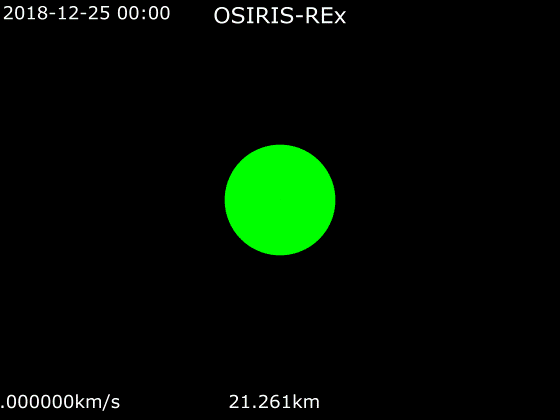
Bennu is an asteroid 4.5 billion years old and 200 million miles (321 million kilometers) from Earth, but it may hold secrets to the origin of our planet and our solar system. That’s why NASA launched the OSIRIS-REX (Origins, Spectral Interpretation, Resource Identification, Security, Regolith Explorer) mission on 3 December 2018. On 22 October 2020, the spacecraft that had been circling Bennu descended at 1.5 inches per second, reached out an arm, landed for 6 seconds, and vacuumed up stardust. The collection mechanism was nicknamed Tag-Sam (Touch-and-Go Sample Acquisition Mechanism). Later, the sample will be sequestered in a chamber to preserve its pristine nature and avoid contamination.

The mission may have been a bit more successful than planned: Bennu’s surface was softer than imagined and the probe picked up so much material than its door was not able to close completely. There has been some leaking, and mission scientists are trying to close the leak before losing the valuable contents. If successful, OSIRIS-REX will begin the return to Earth in March of 2021 and bring the capsule back in 2023.

The USA is not the only rock collector in space. JAXA, Japan’s space agency, already sent Mission Hayabusa, to Itokawa, bringing back 1,500 grains from the asteroid. Now, Hayabusa2 visited a second asteroid, Ryugu, and is on the way back to Earth, expected to return in December 2020 with samples. JAXA representatives and the University of Arizona Bennu project team plan to exchange data and even portions of their respective samples. The USA brought back lunar material to Earth during the Apollo missions to the moon.
The mission to Bennu was conceived by Michael J. Drake, born in Bristol, England, UK who held senior science positions at the University of Arizona in Tucson, and was principal investigator of the team. A plaque honoring Drake states Michael J. Drake inspired and led this mission that will help us to understand “Where did we come from?” and “Where are we going?”
According to current mission principal investigator Dante Lauretta, different parts of Bennu will also have names including Tlanuwa Regio, one of the giant birds of Cherokee mythology, and Amihan Saxum for the Tagalog (Philippines) deity, also a bird, that was said to be the first creature to inhabit the universe. Much can be learned from studying lunar and asteroid samples. As Neil Armstrong, first human to set foot on a celestial surface, stated: “Geologists have a saying – rocks remember.”
Interested in becoming a citizen scientist? Join Target NEOs to identify near-Earth objects (NEOs) and collect data about asteroids. Join here.
More:
Amos, Jonathan. “Osiris-Rex: Nasa asteroid mission confident of success.” 23 October 2020. BBC Science.
Bennu: VIDEO: https://youtu.be/QunVAWABQSc/
Brooke, Kathleen Lusk and Zoë Quinn, “Haybusa Touchdown on Ryugu,” 21 September 2018, Building the World Blog. https://blogs.umb.edu/buildingtheworld/2018/09/21/space-hayabusa-touchdown-on-ryugu/
Chang, Kenneth. “NASA Mission Springs a Small Leak After Touching an Asteroid: The OSIRIS-REX spacecraft collected rock and dirt samples from Bennu, but it appears to be losing some of what it grabbed.” 23 October 2020. The New York Times. https://www.nytimes.com/2020/10/23/science/osiris-rex-asteroid.html:referringSource=articleShare.
NASA. “Touching Down on Asteroid Bennu.” 21 October 2020. https://www.nasa.gov/image-feature/touching-down-on-asteroid-bennu/.
NASA. “Ten Things to Know about Bennu.” 16 October 2020. https://www.nasa.gov/feature/goddard/2020/bennu-top-ten/
NASA. “First Official Names Given to Features on Asteroid Bennu.” 6 March 2020. https://www.nasa.gov/feature/goddard/2020/first-official-names-given-to-features-on-asteroid-bennu/
